After our tour of Egypt we added on a few days in Jordan, mostly to see Petra, but we also visited Amman and Jerash.
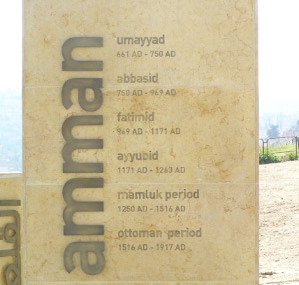 |
|
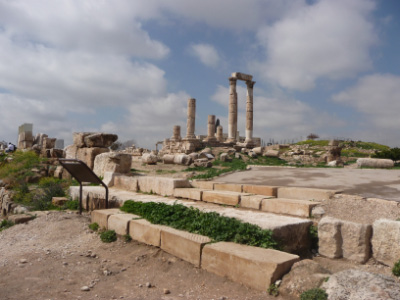 |
Amman has existed since the Persian period (500s BC) and since Jordan is a crossroads in the Middle East it has had a number of names.
|
|
The citadel at the center of the old city has ruins from several periods (iron age to medieval), including this Roman temple of Hercules.
|
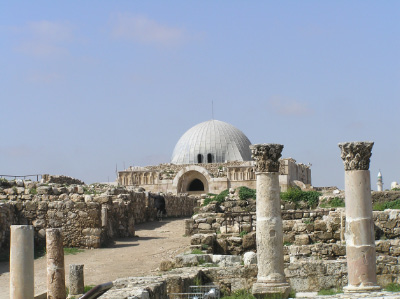 |
|
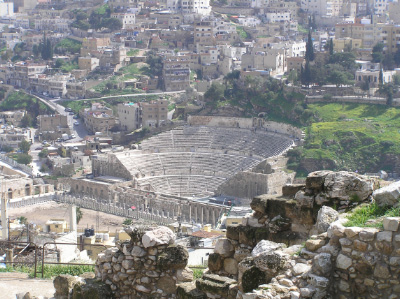 |
At the top of the citadel is the Great Mosque, which started life as a cathedral and still rather looks like one.
|
|
From the citadel you get a good view of the old Roman theater, which can seat about 6000 people--much more impressive than the one in Alexandria. It is still used for special performances.
|
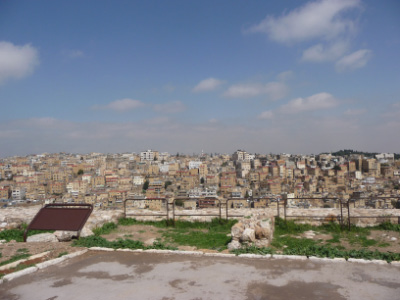 |
|
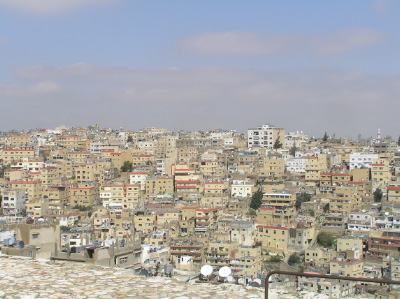 |
There are also good views of the city, which entirely covers the hills on which Amman is built. Right around noon the call to prayer began. Unlike most cities, where each mosque does its own call, in Amman there is just one call broadcast simultaneously from all the mosques and it rings out over the valleys and hills--hearing it is truly a memorable experience.
|
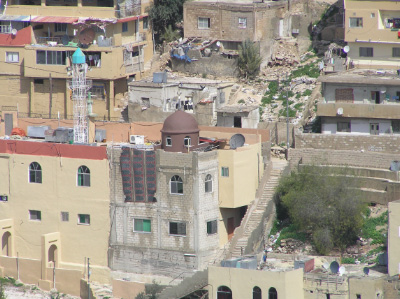 |
|
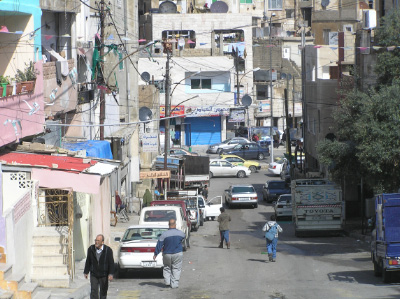 |
The older (poorer) sections of Amman are crowded together on the hills with streets sometimes so steep that they are steps rather than streets. The houses are old but they and the streets are relatively clean and well-maintained.
|
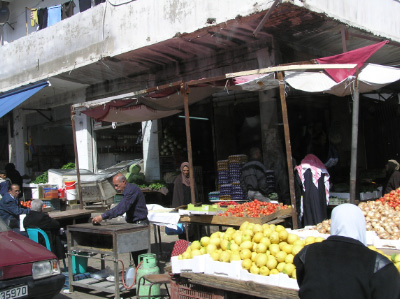 |
|
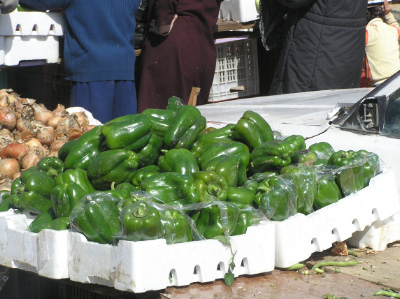 |
Our guide explained that poorer people don't have grocery stores and have to shop at the open-air markets--which to our eyes looked like wonderfully varied and fresh farmers markets that we would travel across town to go to.
|
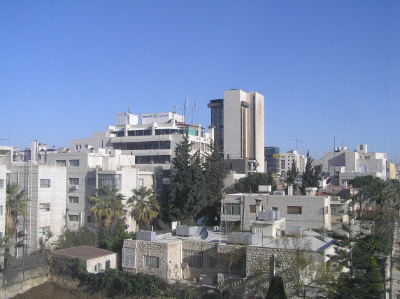 |
|
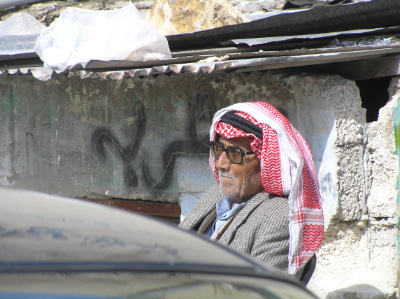 |
In the "more advanced" (newer, richer) parts of town the buildings are very modern and all have to be built of white limestone, which leaves them somewhat lacking in the character of the older areas.
|
|
While most of the women in all areas of the city wore traditional dress, as in Egypt, the men in Jordan were much more likely to wear the keffiyeh or other head covering, often with western suits.
|
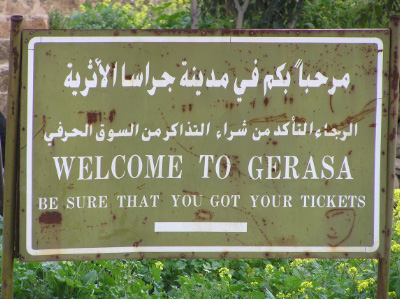 |
|
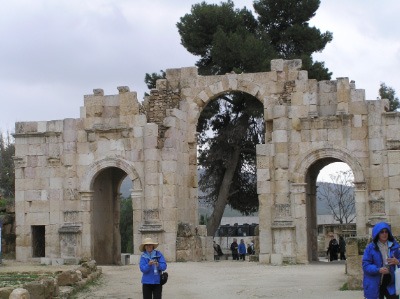 |
Our next stop was the Roman town of Jerash (Gerasa), an important stop on the trade routes of antiquity and now an archaeological site.
|
|
Entry to the town was (and is) through Hadrian's Gate, a typical Roman monumental gateway.
|
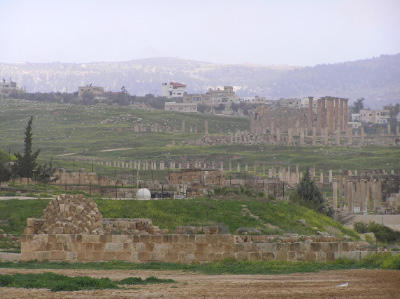 |
|
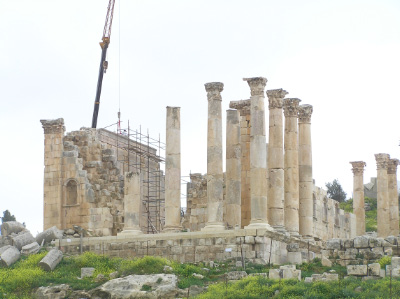 |
The archaeological project covers a large area and much of it is still buried.
|
|
One building that is under active reconstruction (with a crane) is the Temple of Zeus.
|
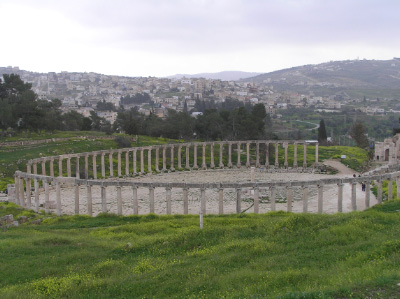 |
|
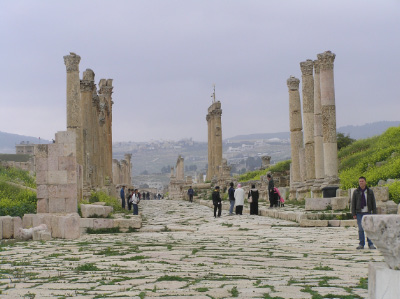 |
The Oval Forum, the center of political life.
|
|
The streets, which would have been colonnaded in Roman times, still have many of the original paving stones as well as the columns of the colonnade.
|
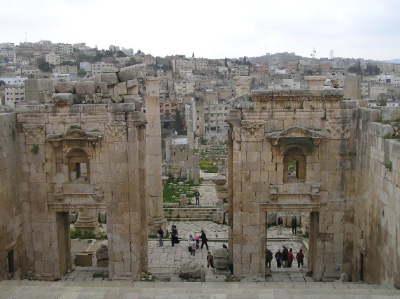 |
|
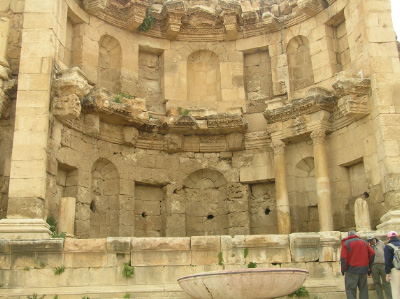 |
The central part of the city was the steps and Propylaea, with the marketplace at the bottom of the steps, the Temple of Artemis at the top, and a huge set of gates in between to separate the sacred space from the non-sacred.
|
|
The Nymphaeum, or public water fountain, was the terminus of an elaborate aqueduct system to bring water into the city--a focal point of city life.
|
 |
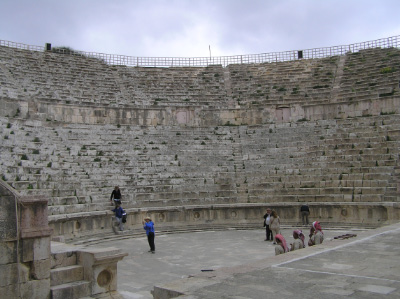 |
|
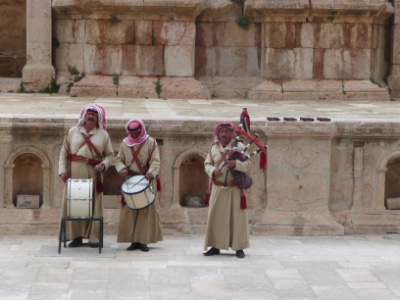 |
The Theater is particularly well restored, especially the back of the stage, quite large, and has excellent acoustics.
|
|
There were entertainers providing music, but for some unknown reason they were playing bagpipes--not exactly a traditional Jordanian instrument.
|
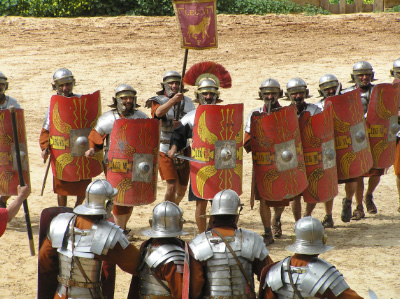 |
|
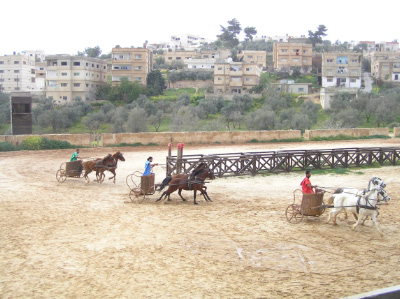 |
| In the restored Hippodrome there was a more apt show with demonstrations of Roman army gear and techniques and a chariot race. |
























